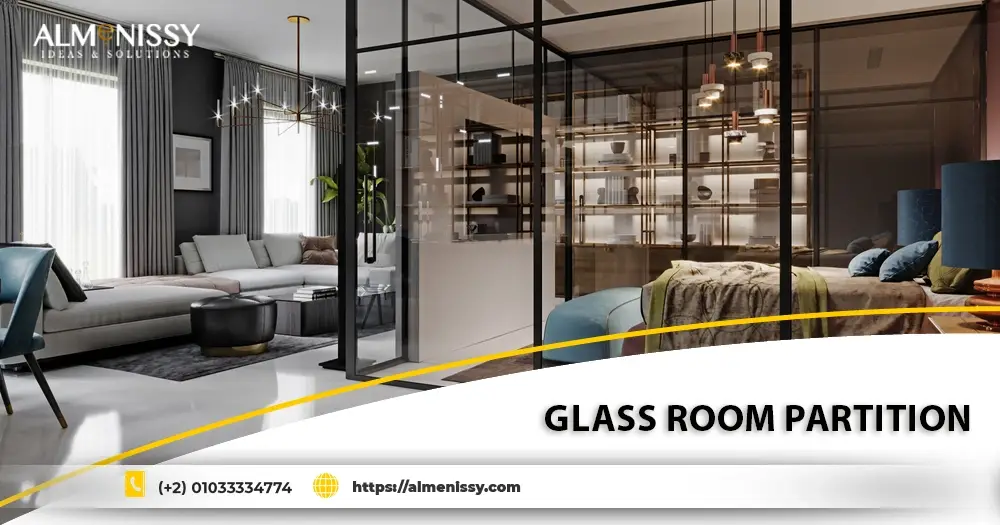Glass room partition are sophisticated architectural elements that offer a blend of functionality and aesthetics in interior design. These partitions utilize transparent or translucent glass panels to divide spaces within a room, creating distinct areas while maintaining an open and airy feel.
Glass room partition commonly used in residential, commercial, and institutional settings, glass room partitions enhance natural light distribution, promote visual connectivity, and contribute to a modern and spacious ambiance. They are available in various styles, from frameless minimalist designs to framed configurations with decorative options, catering to diverse preferences and architectural requirements.
Table of Contents
What are glass partition walls?
Glass room partition are architectural elements made primarily of glass that are used to divide interior spaces within buildings. These partitions serve to create separate areas or rooms while allowing light to pass through, maintaining a sense of openness and visual connectivity. They can be frameless or framed, depending on design preferences and structural requirements.
Glass room partition are popular in offices, homes, commercial spaces, and public buildings due to their aesthetic appeal, functionality, and ability to enhance natural light distribution. They provide privacy to varying degrees depending on the type of glass used (such as frosted or tinted glass) while still contributing to a modern and spacious atmosphere within interiors.
What are glass room partition used for
Glass room partition are used for various purposes across different environments:
- Office Spaces: They create separate work areas, meeting rooms, or cubicles while maintaining a collaborative and open office environment. Glass partitions promote natural light flow and visual connectivity among employees.
- Residential Settings: Glass partitions are used in homes to divide living areas, dining spaces, or home offices. They enhance the sense of openness and can be customized to suit interior design preferences.
- Commercial Buildings: In retail settings, glass partitions can define different sections of a store, such as display areas or fitting rooms, while ensuring visibility and accessibility for customers.
- Hotels and Hospitality: Glass partitions are utilized in hotels to divide lobby spaces, conference rooms, and guest rooms, providing privacy without compromising the overall aesthetic and spaciousness.
- Healthcare Facilities: They create separate patient rooms, examination areas, and waiting rooms while promoting a hygienic and light-filled environment that contributes to patient comfort.
- Educational Institutions: Glass partitions are used in schools and universities to divide classrooms, libraries, and study areas. They facilitate natural light penetration and maintain a conducive learning environment.
- Public Buildings: Glass partitions are employed in museums, government buildings, and cultural centers to create defined spaces for exhibitions, offices, and public areas while enhancing visibility and accessibility.
What are the applications of glass structure?
Glass room partition are widely utilized across diverse architectural and construction contexts due to their versatility, aesthetic appeal, and functional properties. These applications include:
1. Commercial Buildings:
Glass is employed in skyscrapers and office buildings for facades, creating striking visual impressions while maximizing natural light penetration and energy efficiency.
2. Residential homes:
In modern residences, glass structures serve as walls, windows, and doors, enhancing interior illumination, connectivity with outdoor environments, and overall aesthetic appeal.
3. Public spaces:
Glass room partition are integral to museums, airports, and shopping malls, where they are used for atriums, walkways, and facades to foster a sense of openness, transparency, and welcoming ambiance.
4. Greenhouses:
Glass is essential in agricultural settings for creating controlled environments that optimize sunlight exposure and temperature regulation, supporting plant growth and productivity.
5. Sports arenas:
In stadiums and sports facilities, glass structures are utilized for enclosures and seating areas, providing unobstructed views of events while offering weather protection.
6. Educational institutions:
Glass features prominently in schools and universities, facilitating the design of bright and open spaces such as atriums, libraries, and classrooms that promote learning and collaboration.
7. Retail environments:
Glass facades and partitions are used in retail settings to showcase merchandise effectively, create visually appealing storefronts, and enhance customer experiences through transparency and aesthetic appeal.
Is metal framing used for glass room partition?
Metal framing is commonly used in glass room partition to provide structural support, enhance durability, and achieve a modern aesthetic. The metal frames, typically made from aluminum or steel, offer several benefits:
- Structural Support: Metal frames provide stability and structural integrity to glass panels, ensuring they remain securely in place.
- Durability: Aluminum and steel frames are durable and resistant to corrosion, making them suitable for long-term use in various environments.
- Design Flexibility: Metal frames allow for flexibility in partition design, enabling customization of sizes, shapes, and configurations to fit specific architectural and functional requirements.
- Aesthetic Appeal: Metal frames contribute to a sleek and contemporary look, complementing the transparency of glass while providing a contrasting outline that enhances visual appeal.
- Integration with Other Materials: Metal framing can be combined with other materials such as wood or glass inserts to achieve unique design effects or additional functionality, such as sound insulation.
Conclusion
In conclusion, according to Almenissy company glass room partition represent a sophisticated and versatile solution for modern interior design. By utilizing transparent or translucent panels, these partitions effectively divide spaces while preserving a sense of openness and connectivity. They enhance natural light diffusion, promote visual aesthetics, and cater to various functional needs in residential, commercial, and institutional settings.
Whether creating private workspaces in offices, dividing living areas in homes, or delineating public zones in commercial venues, glass room partition blend functionality with elegance, making them a favored choice for enhancing both the practicality and aesthetic appeal of interior spaces.
FAQ
Which is the best partition material?
The best partition material varies depending on the specific requirements of the project, including design preferences, acoustic needs, fire safety regulations, and budget constraints. Each material offers unique advantages, and the choice should be made based on careful consideration of these factors to achieve the desired balance of functionality and aesthetic appeal.
What thickness glass is used in partition wall?
The choice of glass thickness for partition walls depends on factors such as safety requirements, acoustic performance needs, and aesthetic preferences. Thicker glass generally offers greater strength and durability but may also increase weight and cost. Consulting with a professional glass supplier or contractor can help determine the most suitable glass thickness based on specific project requirements.


